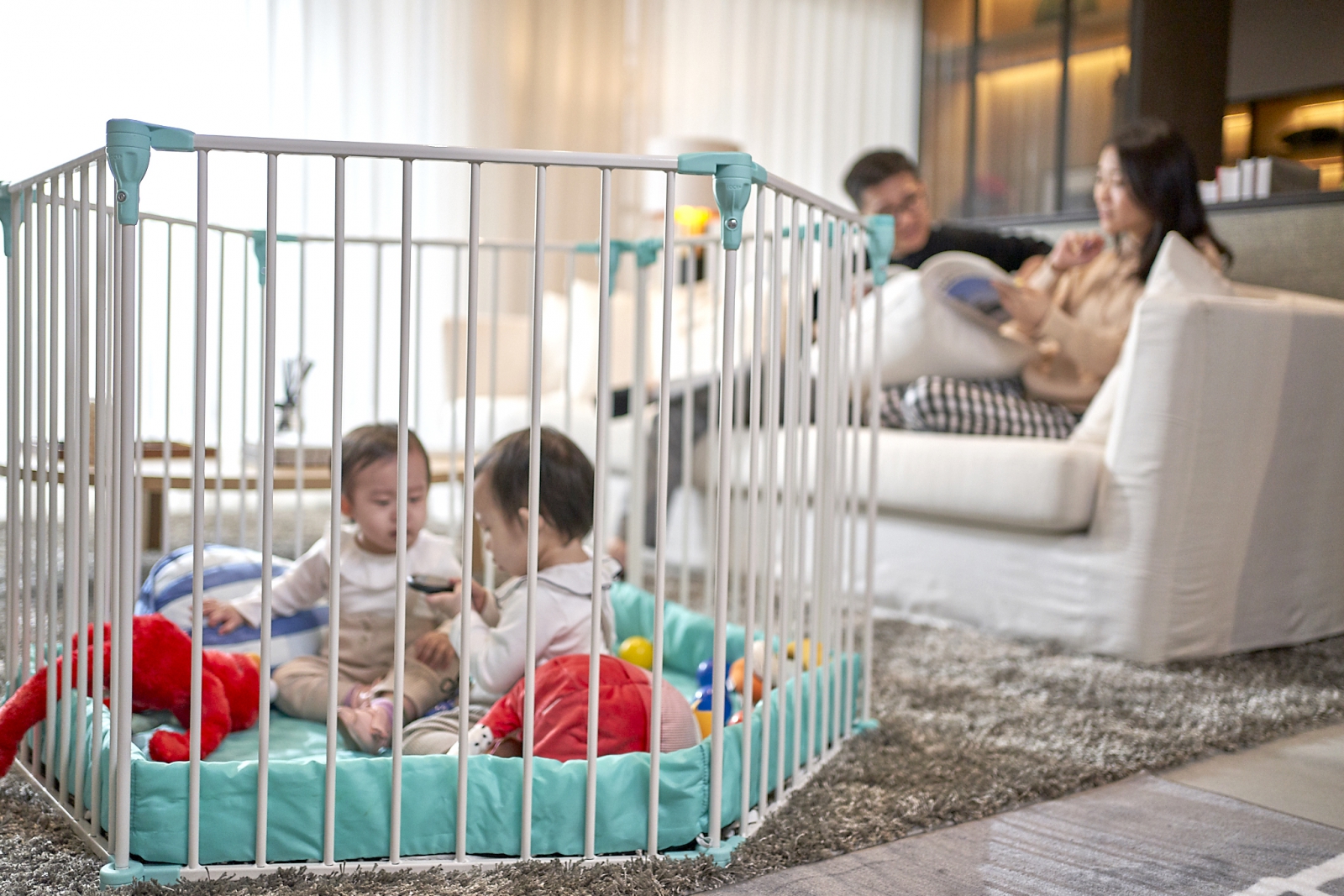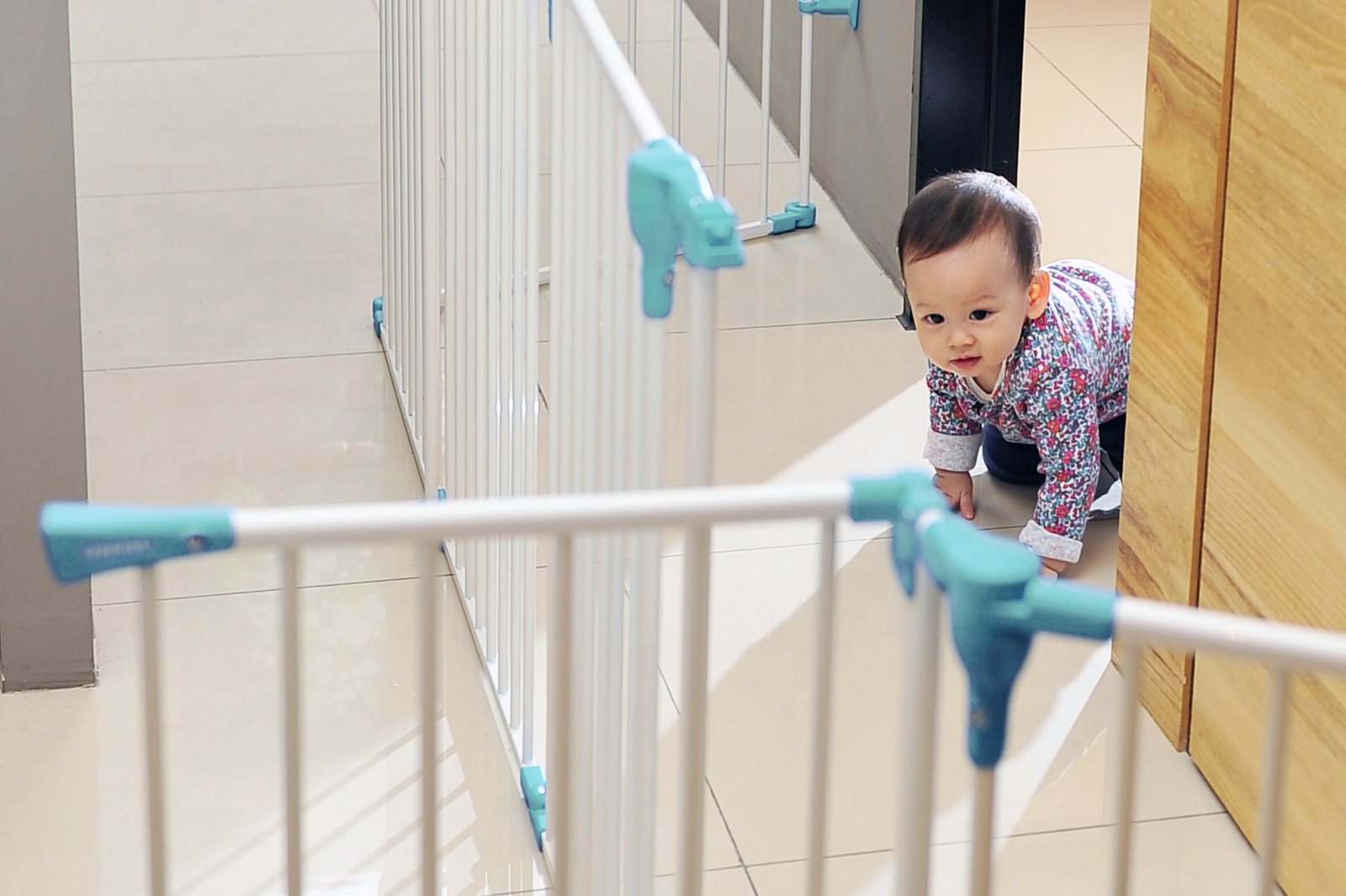Child Safety Gates: Essential Pre-Purchase Information
During the toddler's exploratory phase, filled with curiosity, home serves as their first destination to explore the world.
However, as babies begin to crawl and explore around the house, unknown dangers lurk everywhere...
According to statistics from the Department of Health, one of the most common places where young children get injured is in the home environment. Therefore, creating a safe home for babies is the most important responsibility for parents. Safety barriers play a significant role in separating common hazardous areas in the home. For instance, parents are most concerned about the baby accidentally falling down stairs. Other areas like balconies, kitchens, or bathrooms, which are less safe for babies, can also be separated using safety barriers to create a safety line in the home.

Baby safety barriers are typically available in four-panel, six-panel, or eight-panel configurations, and their main feature is their ability to create various shapes such as squares, rectangles, or hexagons. Because these barriers are suitable for wider spaces, some parents also use them to enclose the entire living room, allowing them to interact and play with their baby in a safe environment.
Determining which areas of the home are suitable for placing safety gates and what to consider when choosing them is crucial for parents. Here are three key points for your reference:
1. Leave space for fences
As playpens require considerable space, it's essential to assess suitable areas in your home for placement or installation beforehand. Most parents opt to place the playpen in spacious areas like the living room or bedroom. This allows babies to play safely within the playpen while parents can attend to their tasks nearby (we know it's a tough job) without being too far from their babies.
Furthermore, if you intend to secure the playpen to a wall, ensure to avoid walls with built-in storage spaces to prevent instability issues.
2. Changing the use of fences to suit the environment
The advantage of a safety fence lies in its ability to extend width and change shape, thereby serving different purposes and values in various usage scenarios. Not only can it create a large safe space for babies to play in, but it can also transform into a gate to fit uneven areas on walls, such as staircases, balconies, open kitchens, or wider corridors. This flexibility makes it highly versatile in usage. Additionally, there are lightweight safety fences available on the market, which are easy to store and carry, suitable for picnics or camping trips, allowing babies to enjoy outdoor activities safely!
3. Choose door rails that meet child safety regulations
It's recommended that when choosing a safety fence, pay attention to whether it complies with international child safety standards, such as the US ASTM F1004 or the European EN12227:2010 standards, to ensure that the product your baby uses is certified and provides a higher level of safety assurance.

After having a deeper understanding of fences, let’s introduce to you the most common fence material choices:
iron fence
Iron safety fences are widely recognized as one of the safest styles available. Their appearance and material provide a strong sense of protection, making them a top choice for many parents. Some iron safety fences are designed to be heavy, but they have a feature where they can be easily expanded or retracted, allowing parents to set them up without much effort.
plastic fence
Lightweight plastic safety fences are also a favorite among many parents. However, because of their lightweight nature, they are more prone to being pushed, so extra caution is needed during use. It's recommended to place some toys inside the fence to add weight and stability to it.
cloth fence
Fabric safety fences, compared to plastic ones, offer a slightly heavier yet softer alternative. Their soft appearance provides a comfortable feel. With a mesh design, fabric fences allow parents to see their baby's movements even from the other side of the fence, reducing separation anxiety for both parent and child.
wooden fence
Many parents opt for wooden safety fences to match the décor of their homes. Wooden fences have the advantage of being heavier, so there's less worry about them being toppled by children. However, their surfaces are more susceptible to damage from knocks or scratches, requiring more maintenance and care.

After reviewing the introduction of children's safety fences above, do you feel that the functionality of the fence is versatile and versatile? Whether it's creating a special space for babies or segregating large areas that need special separation, just one fence can easily help parents ensure the safety of their baby at home.
Now, I believe you can easily find the most suitable fence to create a safe home environment for your baby and enjoy the joy of family life together!